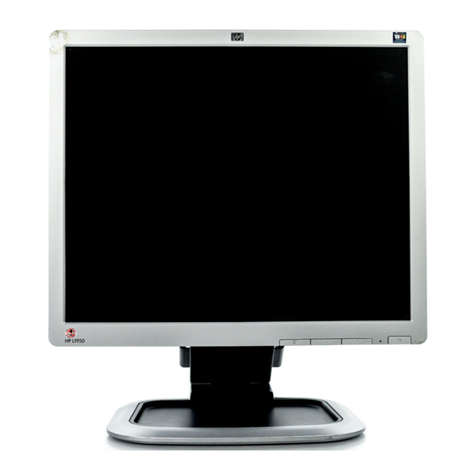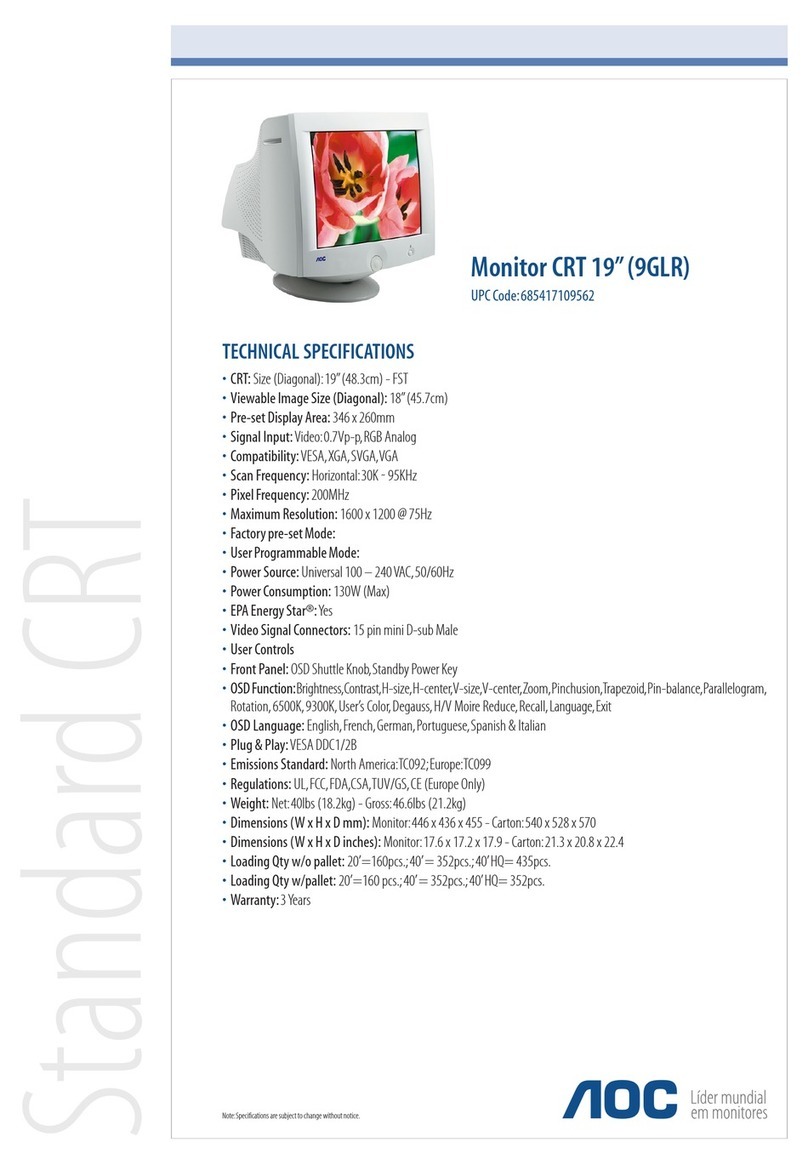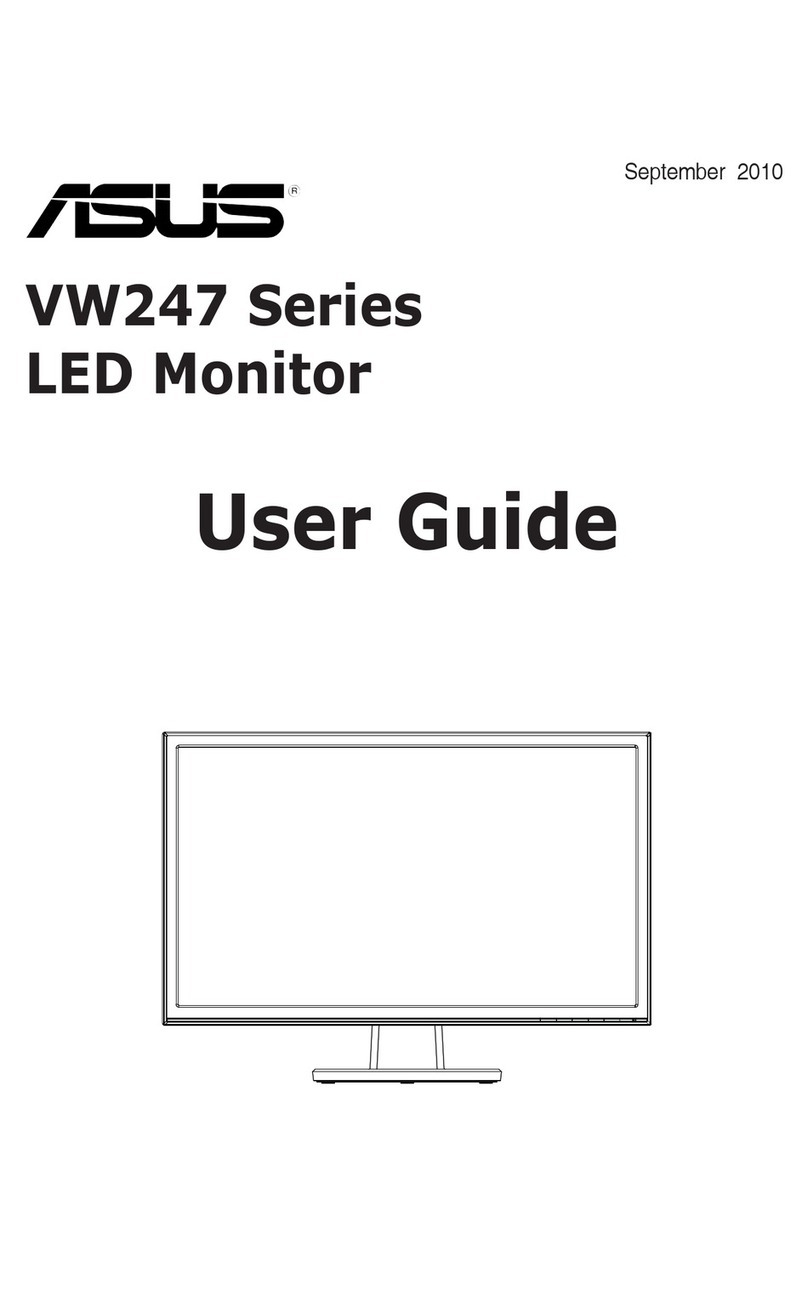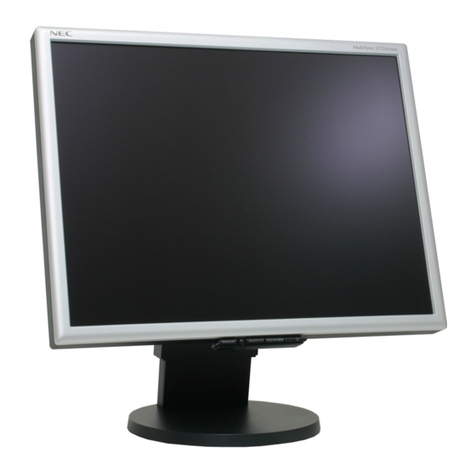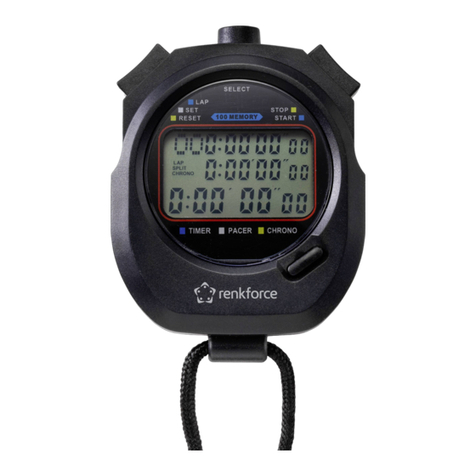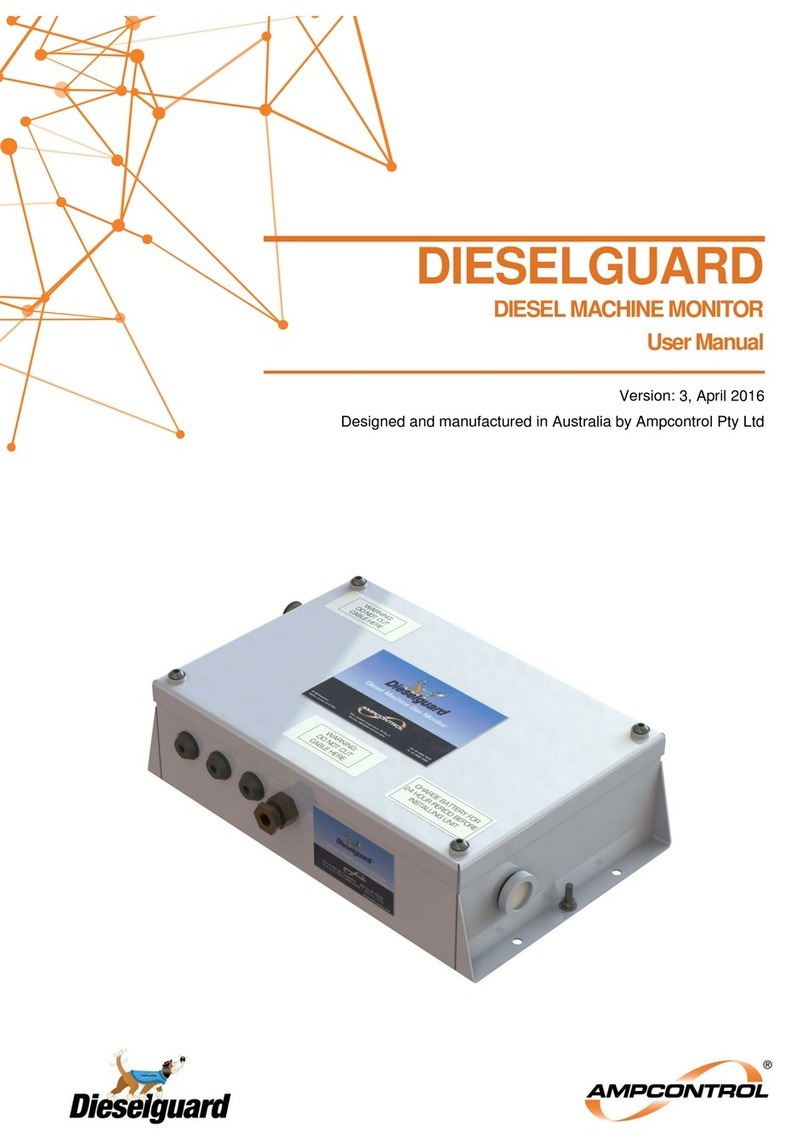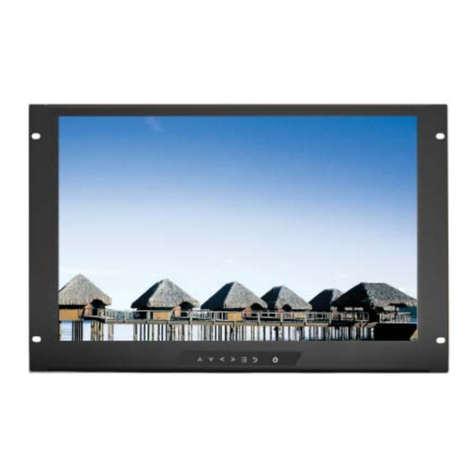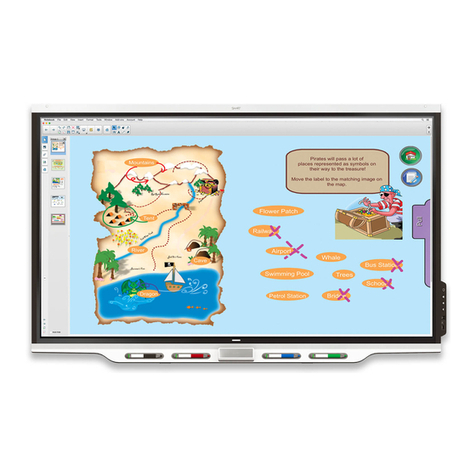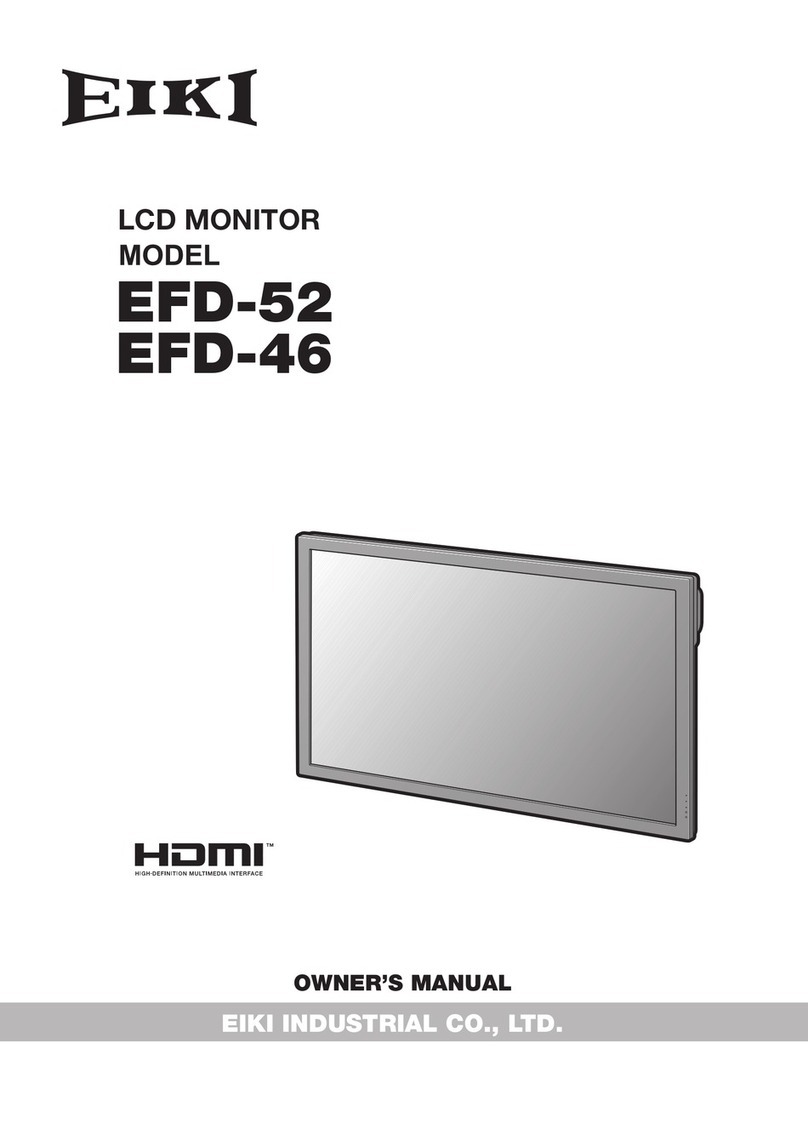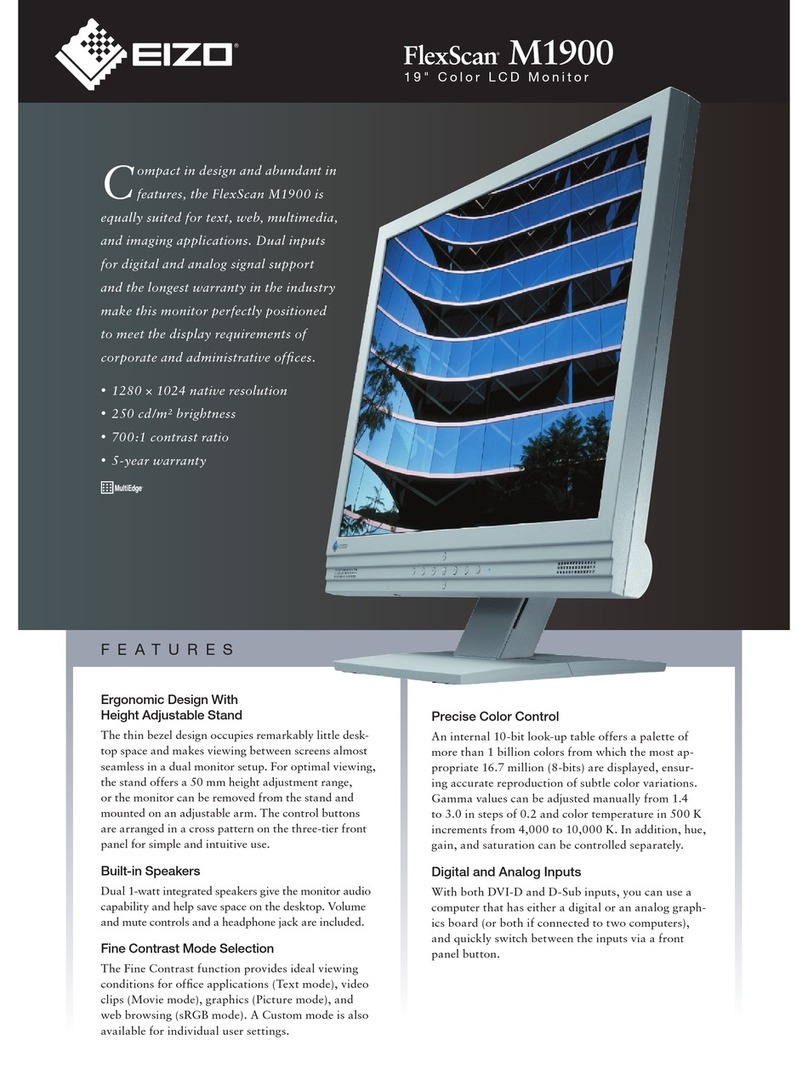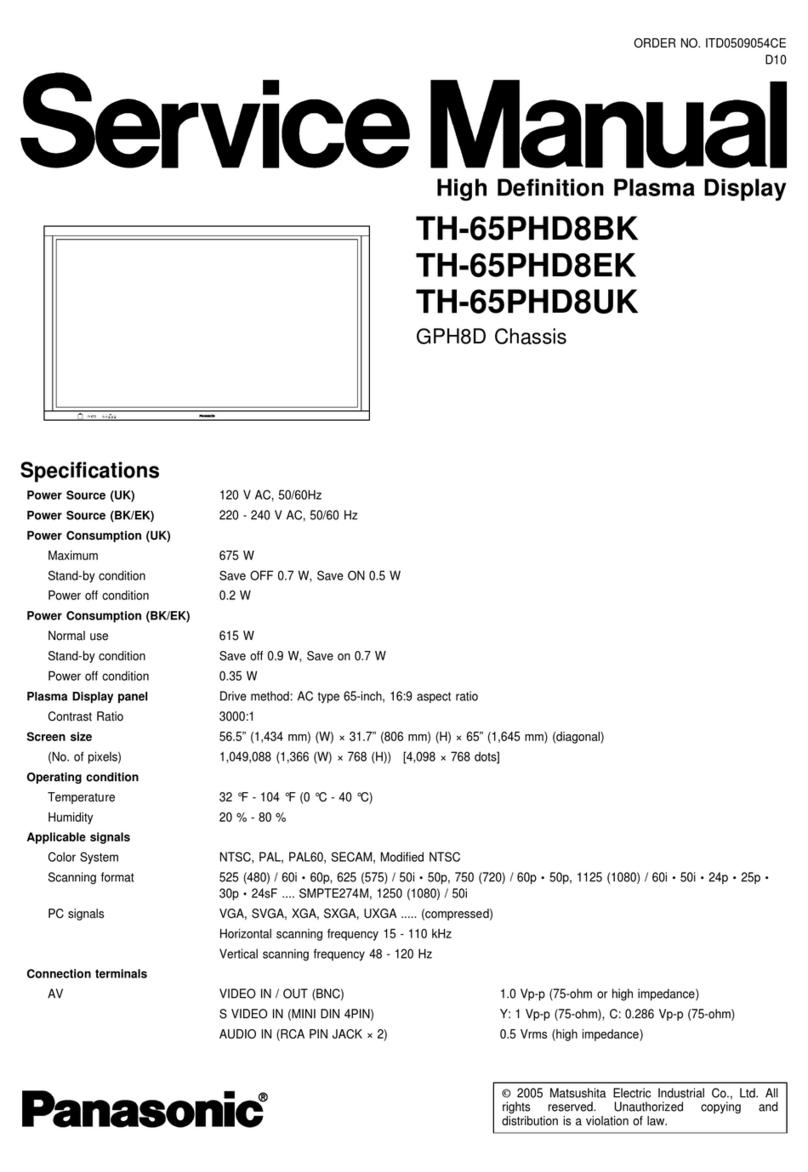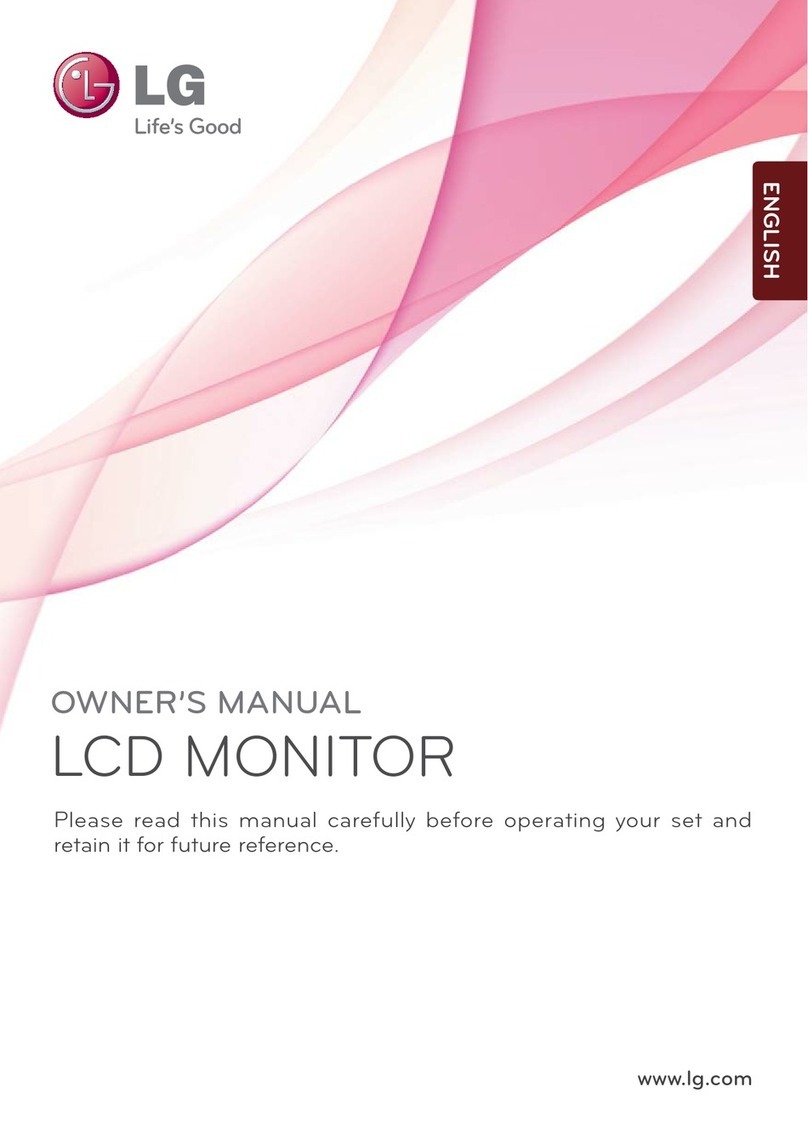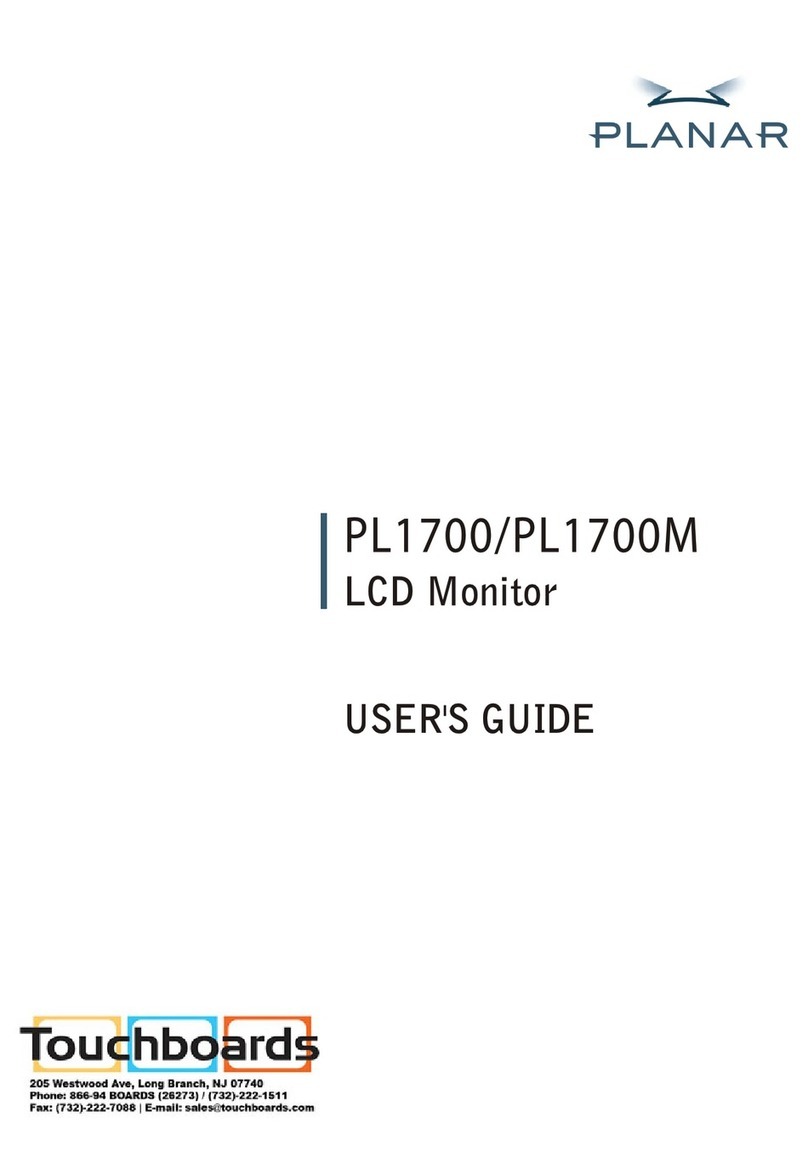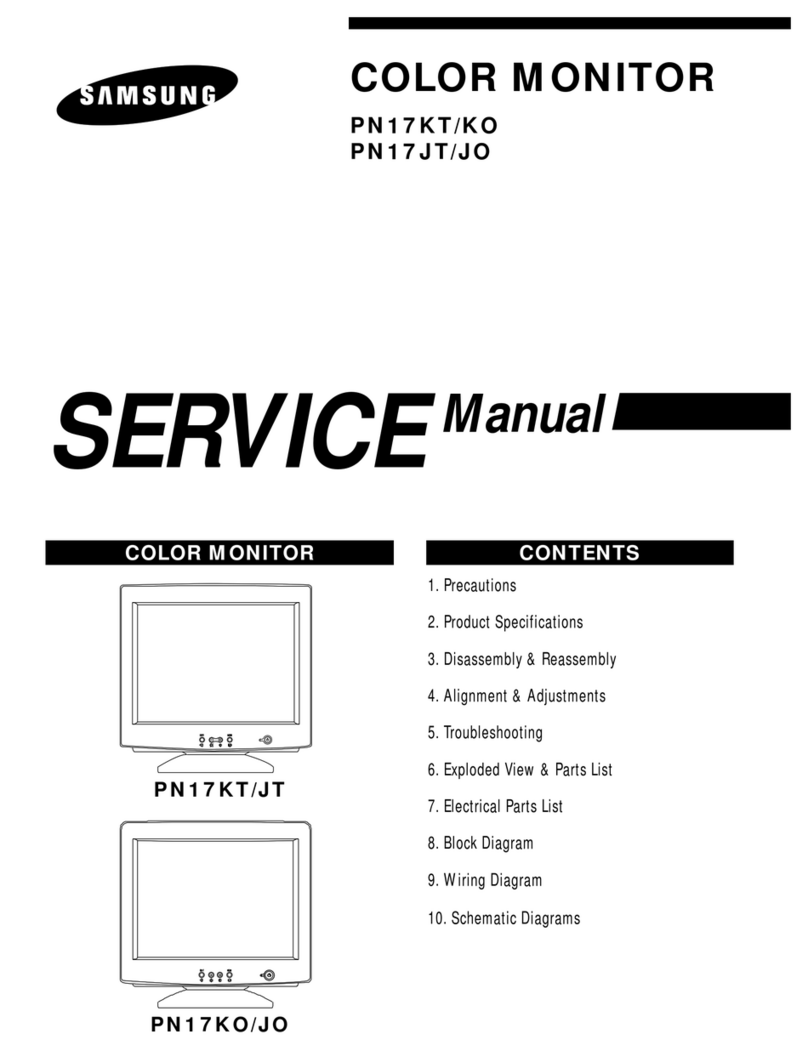EDI LMD222 User manual

THIS MANUAL CONTAINS TECHNICAL INFORMATION FOR
THE LMD222, LMD224 and LMD222-R SERIES INDUCTIVE LOOP MONITOR.
REVISION: AUGUST 2015
pn 888-0222-003
LMD222 and LMD224
Inductive Loop Monitor
Operations Manual

THE LMD222 and LMD224 SERIES IS DESIGNED AND MANUFACTURED IN THE USA
BY EBERLE DESIGN INC.
PHOENIX, ARIZONA
AN ISO 9001:2008 REGISTERED COMPANY
INFORMATION CONTAINED HEREIN IS PROPRIETARY TECHNICAL INFORMATION
OF EBERLE DESIGN INC. PUBLICATION, REPRODUCTION OR USE IN WHOLE OR
PART IS NOT PERMITTED EXCEPT UNDER TERMS AGREED UPON IN WRITING.
DEFLECTOMETER IS A TRADEMARK OF EBERLE DESIGN INC.
U.S. PATENT NO. 7,855,893
©COPYRIGHT 2015 EDI.

Table of Contents
Section 1 GENERAL......................................................................................................... 1
1.1 Description............................................................................................................. 1
1.2 Overview................................................................................................................ 1
1.3 DEFLECTOMETER®Feature................................................................................. 1
Section 2 Installation and Adjustments.......................................................................... 3
2.1 Set the Sensitivity Level ......................................................................................... 3
2.1.1 Adjusting Sensitivity Using the DEFLECTOMETER®(Recommended).......... 3
2.1.2 Adjusting Sensitivity Directly ......................................................................... 4
2.1.3 Dynamic DEFLECTOMETER®Display Operation......................................... 4
2.2 Set the Operational Mode....................................................................................... 4
2.2.1 Output Call Test............................................................................................ 4
2.2.2 Short Presence Mode (S).............................................................................. 4
2.2.3 Long Presence Mode (L)............................................................................... 4
2.2.4 Minimum Presence Time............................................................................... 5
2.2.5 Pulse Mode (P)............................................................................................. 5
2.2.6 Call Mode (C)................................................................................................ 5
2.2.7 Off Mode (-) .................................................................................................. 5
2.3 Set the Frequency.................................................................................................. 5
2.3.1 Displaying the Loop Frequency..................................................................... 5
2.4 Miscellaneous ........................................................................................................ 5
2.4.1 Channel Off................................................................................................... 5
2.4.2 Retune or Reset a Channel........................................................................... 6
2.4.3 Factory Default Settings................................................................................ 6
2.5 Loop Fault Monitoring............................................................................................. 6
2.5.1 Current Fault................................................................................................. 6
2.5.2 Previous Fault............................................................................................... 6
Section 3 Loop Installation.............................................................................................. 7
Section 4 Specifications .................................................................................................. 9
4.1 Mechanical............................................................................................................. 9
4.2 Environmental........................................................................................................ 9
4.3 Electrical ................................................................................................................ 9
4.4 Tuning.................................................................................................................... 9
4.4.1 Loop Inductance (Tuning) Range.................................................................. 9
4.4.2 Environmental Tracking ................................................................................ 9
4.4.3 Grounded Loop Operation............................................................................. 9
4.4.4 Lead-in Length.............................................................................................. 9
4.5 Loop Input (Lightning Protection)............................................................................ 9
4.6 Response Timing ..................................................................................................10
4.6.1 LMD222 Series Response Timing................................................................10
4.6.2 LMD224 Series Response Timing................................................................10
4.7 LMD222 Connector Pin Assignments....................................................................10
4.8 LMD224 Connector Pin Assignments....................................................................10

LMD222 and LMD224 Series
Operations Manual
Eberle Design Inc. Page 1
Section 1
GENERAL
1.1 DESCRIPTION
The LMD222 two channel and LMD224 four channel rack-mounted inductive Loop Monitor
with DEFLECTOMETER®Series is built on the international card format with double-sided
44 pin edge connectors for connection of power, loop inputs and call outputs. The
DEFLECTOMETER®push-button user interface far exceeds the DIP switch based
requirements of the Caltrans specifications. The LMD222 and LMD224 are compatible with
all 332 type Input Files and is intended as a plug-in upgrade for the Model 222 and 224.
The LMD222 meets or exceeds the applicable performance requirements of the California
Department of Transportation (Caltrans) specifications TEES March 2009.
Each channel has individual controls for setting up sensitivity, operational mode and
frequency on the front panel. Two high intensity front panel LEDs indicate vehicle detection
and fault monitoring status for each channel. Call outputs are available in either relay or
optically-isolated solid-state transistor form.
1.2 OVERVIEW
A dynamic Overview of the LMD operation which includes an LMD Simulator is available on
the EDI Web Site; www.EDItraffic.com.
1.3 DEFLECTOMETER®FEATURE
The LMD Series Loop Monitor introduces a concept to the inductive loop detector field that
revolutionizes the process of installing and programming a loop detector. The new user
interface of the LMD Series provides the feedback necessary to the signal technician to
quickly and accurately program the parameters of the detector exactly to the loop plus lead-
in system characteristics.
Loop diagnostic capabilities incorporated within the LMD Series Loop Monitor enable the
detection of short or open circuit loops and sudden changes of inductance exceeding 25
percent of the nominal inductance. Each type of fault is signified by the fault indicator
emitting a different flash sequence. This information can greatly assist the user in the
diagnosis of loop related problems.
Why guess when you can know!
The DEFLECTOMETER®display shows the relative strength of the call
while a vehicle is in the detection zone. This provides feedback that the
unit is optimally tuned to detect vehicles of all sizes.
Setting the sensitivity level of the detector can be easily done in one step
with a “typical”
vehicle parked in the detection zone. The
DEFLECTOMETER®display updates dynamically as the sensitivity level is
changed. See section 2.1.1.
The simple push-button interface is intuitive and eliminates many of the
reliability problems found with tiny DIP switches of conventional detectors.
Operational mode, Frequency, and Sensitivity are all programmed and
displayed using the push-button interface. Settings are stored in non-
volatile memory.

LMD222 and LMD224 Series
Operations Manual
Eberle Design Inc. Page 2
The unit will detect inductance changes as small as 0.010% ∆L/L. Each channel is
sequentially energized and sampled so as to negate the possibility of crosstalk between
loops connected to different channels of the same detector.

LMD222 and LMD224 Series
Operations Manual
Eberle Design Inc. Page 3
Section 2
Installation and Adjustments
2.1 SET THE SENSITIVITY LEVEL
The DEFLECTOMETER®(front panel 7-segment LED display) aids in setting the detector
to the most optimum sensitivity level to ensure the detection of all vehicles, including
motorcycles and high bed vehicles.
For typical vehicles (mid-size vehicle / small pick up) utilizing properly installed roadway
loops, when the Call Strength value 4, 5, or 6 (5 being optimum) is displayed on the
DEFLECTOMETER®during the DETECT output period then the sensitivity level is set
correctly. For high profile vehicles (commercial trucks, 4x4’s, etc…), a DEFLECTOMETER®
Call Strength value of 4 will be best. For low profile vehicles (sports cars, etc…), a
DEFLECTOMETER®Call Strength value of 6 will be best.
2.1.1 ADJUSTING SENSITIVITY USING THE DEFLECTOMETER®(RECOMMENDED)
The DEFLECTOMETER®should read zero (0) with no vehicle over the roadway loop. With
a typical mid-sized vehicle in the detection zone (DET indicator On), the
DEFLECTOMETER will display the Call Strength value (1 - 9).
If a mid-size vehicle, located over the roadway loop causes the Call Strength value “7” to
be displayed on the DEFLECTOMETER®, the sensitivity should be lowered two levels (7 –
2 = DEFLECTOMETER reading “5”). This is done by pressing the front panel SENS
(down) button twice.
If a mid-size vehicle, located over the roadway loop causes the value “2” to be displayed on
the DEFLECTOMETER®, the sensitivity should be increased three levels (2 + 3 =
DEFLECTOMETER reading “5”. This is done by pressing the front panel SENS(up)
button three times.
NOTE: The DEFLECTOMETER®dynamically updates after each Sensitivity Level
change, allowing changes to the Sensitivity setting while a vehicle remains in
the loop detection zone. Note that the Call Strength value may be different than
the actual Sensitivity Level setting.
While the LMD Series unit is in the Call state (DEFLECTOMETER = 1-9), the
DEFLECTOMETER®displays the Call Strength (1 – 9). The Call Strength will
increase or decrease one step as the Sensitivity Level is increased or
decreased one step.
The Call Strength value will depend on the size and type of vehicle in the
detection zone as well as the Sensitivity Level setting of the channel. The
optimum value for a mid-sized vehicle is 5.
The procedure in section 2.1.1 provides a quick and simple way to program
the Sensitivity Level to the optimum setting to ensure all classes of vehicles
are reliably detected with one simple step.
The resulting Sensitivity Level can be then be displayed using the procedure
in section 2.1.2. While the LMD Series is in the No-Call state
(DEFLECTOMETER = 0), the DEFLECTOMETER®
will display the
Sensitivity Level (1 – 9) when either SENS button is pressed once.

LMD222 and LMD224 Series
Operations Manual
Eberle Design Inc. Page 4
2.1.2 ADJUSTING SENSITIVITY DIRECTLY
The LMD Series offers nine levels of sensitivity (1 to 9). The Sensitivity Level can be
manually set to any desired level by pressing the SENSor SENSfront panel buttons
when a vehicle is NOT over the roadway loop. The Sensitivity Level will be now displayed
on the DEFLECTOMETER. Pressing the SENSor SENSbutton once will display the
Sensitivity Level without changing the setting. After pressing the SENSor SENS
buttons to display the Sensitivity Level, the setting can then be modified by pressing the
SENSor SENSbuttons again. The display will automatically return to the normal
display after three seconds. The factory default Sensitivity Level is 6.
Sensitivity
∆L / L
Sensitivity
∆L / L
9
0.01%
4
0.32%
8
0.02%
3
0.64%
7
0.04%
2
1.28%
6
0.08%
1
2.56%
5
0.16%
-
-
Note that each change of the Sensitivity Level while in this “direct adjust” mode causes the
LMD Series to retune.
Caltrans sensitivity levels 1, 2, and 3 are equivalent to the LMD222 and LMD624 levels of
3, 4, and 5 respectively.
2.1.3 DYNAMIC DEFLECTOMETER®DISPLAY OPERATION
While the LMD Series is in the Call state (DEFLECTOMETER = 1-9), the
DEFLECTOMETER®displays the Call Strength (1 – 9). When the Call terminates (DET
indicator Off) the Call Strength will be displayed for an additional three seconds. Pressing
the SENSor SENSbutton during this interval will modify the Sensitivity Level as
described in section 2.1.1, with the DEFLECTOMETER®display remaining in the Call
Strength mode.
Pressing the SENSor SENSbutton when the LMD Series is not in the Call state
(DEFLECTOMETER = 0) will display and modify the Sensitivity Level directly as described
in section 2.1.2. In this case the DEFLECTOMETER®displays the actual Sensitivity Level.
2.2 SET THE OPERATIONAL MODE
Operational mode can be set to Short Presence, Long Presence, Pulse, Call or Off mode.
Pressing the MODE button once will display the Operational Mode without changing the
setting. After pressing the MODE button to display the current Operational Mode, the
setting can then be changed by pressing the MODE button again. The display will
automatically return to the normal display after several seconds.
Changing the Operational Mode will cause the channel to retune.
2.2.1 OUTPUT CALL TEST
Each time the MODE button is pressed and held for one second, the unit will generate a
pulsed (125 ms) Call state (true) output every 1500 ms. This operation can be used to
quickly verify that a Call output is being received by the Controller Unit.
2.2.2 SHORT PRESENCE MODE (S)
The Short Presence mode will tune out a continuous Call after 30 minutes. Use Short
Presence unless the detection zone is expected to be continuously occupied for periods of
time in excess of 30 minutes.
2.2.3 LONG PRESENCE MODE (L)
The Long Presence mode will tune out a continuous Call after 120 minutes.

LMD222 and LMD224 Series
Operations Manual
Eberle Design Inc. Page 5
2.2.4 MINIMUM PRESENCE TIME
When the diode (1N4148WS) labeled OPT4 is installed, the LMD Series will limit the
minimum presence time to 100 milliseconds.
2.2.5 PULSE MODE (P)
The Pulse mode will provide a 125 ms ± 25ms width output pulse for each vehicle entering
the loop.
2.2.6 CALL MODE (C)
The Call mode will set the channel output to the Call state (True). This mode can be used
to provide a continuous Call state to the Controller Unit regardless of the state of the
detection zone. Loop fault conditions are ignored in this mode.
2.2.7 OFF MODE (-)
The Off mode will set the channel output to the No Call state (False). This mode can be
used if the channel is not used or not connected to a loop. Loop fault conditions are ignored
in this mode.
2.3 SET THE FREQUENCY
Pressing the FREQ button once will display the Frequency
Level (1 – 4) without changing the setting. After pressing
the FREQ button to display the current Frequency Level,
the setting can then be changed by pressing the FREQ
button again. The display will automatically return to the
normal display after several seconds.
The Frequency level needs to be changed only if
interference occurs between adjacent loops connected to different sensor units.
Interference or crosstalk may manifest itself as chattering of the call output or a detect call
occurring at the same time as an adjacent unit when there is no vehicle present. If crosstalk
is suspected, try to separate the frequencies of the channels causing the problem. A
minimum of 5 KHz separation is recommended. Four frequency levels are available on
each channel to assist in alleviating interference affecting more than two units.
Changing the Frequency Level will cause the channel to retune.
2.3.1 DISPLAYING THE LOOP FREQUENCY
The current loop frequency is displayed by after pressing the FREQ button to display the
current Frequency Level. The frequency is shown in KHz with a “-“ symbol displayed both
before and after the numeric digits shown on the DEFLECTOMETER®.
For example, after pressing the FREQ button once the display sequence might show:
“3” “-“ “2” “7” “-“
This sequence would indicate Frequency Level “3” and a loop reference frequency of 27
KHz.
2.4 MISCELLANEOUS
2.4.1 CHANNEL OFF
If a channel is not to be used, it may be switched off (disabled) by setting the Operational
Mode to OFF. See section 2.2.6.
Frequency
Level 4
High
Level 3
Medium High
Level 2
Medium Low
Level 1
Low

LMD222 and LMD224 Series
Operations Manual
Eberle Design Inc. Page 6
2.4.2 RETUNE OR RESET A CHANNEL
Press the MODE and FREQ buttons simultaneously to reset the channel. This will clear any
previous loop fault indication and cause the channel to retune.
2.4.3 FACTORY DEFAULT SETTINGS
Press the Channel 1 MODE and FREQ buttons simultaneously while first applying power to
the unit to reset all channels to the factory default settings.
Factory Defaults
Sensitivity Level
6
Operational Mode
Short Presence
Frequency Level
High
2.5 LOOP FAULT MONITORING
The LMD Series Loop Monitor continuously checks the integrity of the loop. The system is
able to detect open circuit loops, shorted loops, or sudden changes in inductance
exceeding 25% of the nominal inductance.
2.5.1 CURRENT FAULT
If a fault is detected, both the DET (Red) and FLT (Yellow) LEDs continuously emit a
sequence of flashes and the DEFLECTOMETER will display the letter “F”. Each type of
fault is identified by a different flash sequence followed by a one second pause:
Flash Sequence
Fault
1 flash
Open Circuit Loop (or Inductance too high)
2 flashes
Shorted Circuit Loop (or inductance too low)
3 flashes
>25% Change in Inductance
2.5.2 PREVIOUS FAULT
If the fault condition is removed, the DET indicator and the channel output will return to
normal operation. The FLT indicator will continue to flash indicating that a fault had
previously occurred. This Previous Fault indication may be reset by momentarily pressing
the MODE and FREQ buttons simultaneously. See section 2.4.2.

LMD222 and LMD224 Series
Operations Manual
Eberle Design Inc. Page 7
Section 3
Loop Installation
The typical sensing height is 2/3 of the shortest leg of a loop (in feet). Therefore a 4’ x 8’
loop typically has a detection height of 2.6’.
The inductance of a conventional four-sided loop can be estimated using the formula:
L = P x (T2+ T) / 4 Where L = Loop Inductance in microHenries
P = Loop Perimeter in feet
T = Number of wires in saw slot
Therefore a 4’ x 8’ loop with 3 turns would be:
L = (4 + 8 + 4 + 8) x (32 + 3) / 4
L = 24 x (9 + 3) / 4
L = 24 x 12 / 4
L = 72 microHenries
Note: Loop feeder cable typically adds 0.22 microHenries of inductance per foot of cable.
The following are suggested guidelines for loop installation:
To begin, make sure that the pavement surface in the area that loops are to be installed is
dry and free of debris. The outline of the loop(s) should be marked on the pavement in such
a way that the lines can be followed easily by the saw operator and not be erased by the
water feed from the saw itself.
All 90-degree corners should be chamfered so that the course of the loop wire does not
change direction sharply but rather at shallower angles of 45 degrees or less. Core drilling
of the corners achieves the same effect but can still lead to failure due to sharp edges
remaining in the corner area. When the outline of the loop and lead-in has been marked,
the pavement can be cut. Diamond blade cutting saws are recommended. The saw cut
should be approximately 2.0 inches deep and 0.25 inches wide. The saw slot should then
be cleaned out and allowed to dry. Compressed air is useful both for ejecting debris and
speeding up the drying process. All debris in the vicinity of the saw slot should also be
removed so that it is not accidentally pushed back in.
As a general rule loops with circumference lengths less than 12 feet require 5 turns of wire,
12 to 60 feet require 3 to 4 turns of wire, loops with greater circumference lengths should
have 2 to 3 turns.
Recommended loop wire is typically 14, 16, 18, or 20 AWG with cross-linked polyethylene
insulation. Since moisture can cause significant changes in the dielectric constant of the
insulation, which results in excessive loop (frequency) drift, choose insulation, which is
most impervious to moisture. PVC, TFFN, THHN, and THHN-THWN should be avoided
since they tend to absorb moisture and crack easily. XLPE (Cross Linked Polyethylene) is
very resistant to moisture absorption and provides good abrasion resistance.
If long lead-ins are required, it is suggested that the loop cable be spliced onto shielded,
pre-twisted, lead-in wire (IMSA specification 50-2 is suggested) at a convenient pull box
location close to the loop. The shield may be connected to earth at the cabinet end but
should then be insulated and isolated from earth ground at the loop end. The inductance of
the loop itself should be at least 50% of the sum of loop inductance plus lead-in inductance.
Start laying the loop wire from the termination of the lead-in out towards the loop, continue
around the loop for the number of turns required and finally return to the lead-in
termination. Leave the lead-in wire out of the slot so that it may be twisted together before
being laid in the slot. Lead-ins should be twisted with a minimum of 4 to 6 twists per foot to
prevent any separation of the lead-in wires.
Make sure that the loop wire is pushed fully to the bottom of the saw slot. Small pieces of
foam rubber (backer rod) or similar material may be used at various points around the

LMD222 and LMD224 Series
Operations Manual
Eberle Design Inc. Page 8
circumference to prevent the loop wire from rising up while the sealant is poured and
curing.
Many different types of loop sealant are now available. Single part types are the easiest to
apply since no mixing is required, but they also tend to be more expensive in terms of linear
feet of saw slot filled. When applying the sealant, make sure that it is able to sink to the
bottom of the slot and completely encase the loop wire. The wire should not be able to
move when the sealant has set. Ensure that there is enough sealant to completely fill the
slot; if possible the sealant should protrude slightly above the surface of the pavement so
that small rocks or other debris cannot collect in the slot.
The sealant manufacturer instructions concerning setting time should be noted especially
when determining the length of time to wait before allowing vehicles to cross the loop area.
Consult the Eberle Design web site at www.EDItraffic.com for further application
information regarding loop design.

LMD222 and LMD224 Series
Operations Manual
Eberle Design Inc. Page 9
Section 4
Specifications
4.1 MECHANICAL
Height......................................................................................................... 4.50 inches
LMD222 Width ........................................................................................... 1.14 inches
LMD224 Width ........................................................................................... 2.34 inches
Depth (excluding handle)...........................................................................6.875 inches
4.2 ENVIRONMENTAL
Storage Temperature Range................................................................... -45 to +85 oC
Operating Temperature Range................................................................ -34 to +74 oC
Humidity Range (non-condensing).....................................................0 to 95% Relative
4.3 ELECTRICAL
DC Supply Voltage Minimum...........................................................................10.8 Vdc
DC Supply Voltage Maximum..........................................................................28.8 Vdc
DC Supply Current ...........................................................................100 mA Maximum
Optically Isolated Solid State Outputs
True (low, 50 mA).......................................................................less than 1.5 Vdc
Maximum Leakage Current (DC Supply = 24Vdc)..........................................1 uA
Maximum Current (low) ............................................................................ 100 mA
Relay Outputs
AC Contact Rating..........................................................................5A @ 120 Vac
DC Contact Rating............................................................................5A @ 30 Vdc
4.4 TUNING
4.4.1 LOOP INDUCTANCE (TUNING) RANGE
The detector will automatically tune to a loop and lead-in combination within the tuning
range of 20 to 2500 microHenry with a Q factor greater than 5.
4.4.2 ENVIRONMENTAL TRACKING
The detector automatically and continuously compensates for component drift and
environmental effects throughout the tuning range and across the entire temperature range.
4.4.3 GROUNDED LOOP OPERATION
Each detector channel will operate when connected to poor quality loops including those
that have a short to ground at a single point.
4.4.4 LEAD-IN LENGTH
The unit will operate with lead-in (feeder) lengths over 1,000 feet with appropriate loops
and proper lead-in cable.
4.5 LOOP INPUT (LIGHTNING PROTECTION)
The loop input incorporates lightning and transient protection devices and the loop
oscillator circuitry is transformer-isolated for each channel. The lightning protection will
withstand the discharge of a 10uF capacitor charged to 2,000V across the loop inputs or
between a loop input and Earth Ground for each channel. The transformer isolation allows
operation with a loop which is grounded at a single point.

LMD222 and LMD224 Series
Operations Manual
Eberle Design Inc. Page 10
4.6 RESPONSE TIMING
This table assumes that all channels are set to the same Sensitivity Level.
4.6.1 LMD222 SERIES RESPONSE TIMING
Sensitivity Level
Response
Sensitivity Level
Response
9
40 +/- 15ms
4
3 +/- 1ms
8
19 +/- 7ms
3
3 +/- 1ms
7
10 +/- 3ms
2
3 +/- 1ms
6
5 +/- 1.5ms
1
3 +/- 1ms
5
3.2 +/- 1ms
--
--
4.6.2 LMD224 SERIES RESPONSE TIMING
Sensitivity Level
Response
Sensitivity Level
Response
9
162-217 ms
4
11-16 ms
8
77-102 ms
3
11-16 ms
7
38-51 ms
2
11-16 ms
6
21-28 ms
1
11-16 ms
5
12-18 ms
--
--
4.7 LMD222 CONNECTOR PIN ASSIGNMENTS
Pin
Function
Pin
Function
A
Logic Ground
1
Reserved
B
Detector Unit DC Supply
2
Reserved
C
External Reset
3
Reserved
D
Channel 1 Loop Input
4
Channel 1 Redundant Loop Input
E
Channel 1 Loop Input
5
Channel 1 Redundant Loop Input
F
Channel 1 Output (+)
6
Reserved
H
Channel 1 Output (-)
7
Reserved
J
Channel 2 Loop Input
8
Channel 2 Redundant Loop Input
K
Channel 2 Loop Input
9
Channel 2 Redundant Loop Input
L
Chassis Ground
10
Reserved
M
Reserved
11
Reserved
N
Reserved
12
Reserved
P
Reserved
13
Reserved
R
Reserved
14
Reserved
S
Reserved
15
Reserved
T
Reserved
16
Reserved
U
Reserved
17
Reserved
V
Reserved
18
Reserved
W
Channel 2 Output (+)
19
Reserved
X
Channel 2 Output (-)
20
Reserved
Y
Reserved
21
Reserved
Z
Reserved
22
Reserved
Pin 1 through 22 is on the top (component) side and pin A through Z is on the bottom
(solder) side. Polarization keys are located at three positions:
Between B/2 and C/3
Between M/11 and N/12
Between E/5 and F/6
4.8 LMD224 CONNECTOR PIN ASSIGNMENTS
Pin
Function
Pin
Function
A
Logic Ground
1
Reserved
B
Detector Unit DC Supply
2
Reserved

LMD222 and LMD224 Series
Operations Manual
Eberle Design Inc. Page 11
Pin
Function
Pin
Function
C
External Reset
3
Reserved
D
Channel 1 Loop Input
4
Channel 1 Redundant Loop Input
E
Channel 1 Loop Input
5
Channel 1 Redundant Loop Input
F
Channel 1 Output (+)
6
Reserved
H
Channel 1 Output (-)
7
Reserved
J
Channel 2 Loop Input
8
Channel 2 Redundant Loop Input
K
Channel 2 Loop Input
9
Channel 2 Redundant Loop Input
L
Chassis Ground
10
Reserved
M
Reserved
11
Reserved
N
Reserved
12
Reserved
P
Channel 3 Loop Input
13
Channel 3 Redundant Loop Input
R
Channel 3 Loop Input
14
Channel 3 Redundant Loop Input
S
Channel 3 Output (+)
15
Reserved
T
Channel 3 Output (-)
16
Reserved
U
Channel 4 Loop Input
17
Channel 4 Redundant Loop Input
V
Channel 4 Loop Input
18
Channel 4 Redundant Loop Input
W
Channel 2 Output (+)
19
Reserved
X
Channel 2 Output (-)
20
Reserved
Y
Channel 4 Output (+)
21
Reserved
Z
Channel 4 Output (-)
22
Reserved
Pin 1 through 22 is on the top (component) side and pin A through Z is on the bottom
(solder) side. Polarization keys are located at three positions:
Between B/2 and C/3
Between M/11 and N/12
Between E/5 and F/6
This manual suits for next models
1
Table of contents
Other EDI Monitor manuals

EDI
EDI EDV206-104-4D-N1-STACK User manual

EDI
EDI EDV225MPC-3L-N1-VT User manual

EDI
EDI EDV225MPC-2L-N1-VT User manual

EDI
EDI EDV206-103-4D-N1-AO-IR User manual

EDI
EDI 2010ECL-NYC User manual

EDI
EDI 210 Series User manual

EDI
EDI NSM-3E User manual

EDI
EDI 2018KCL Series User manual

EDI
EDI 210 Series User manual
